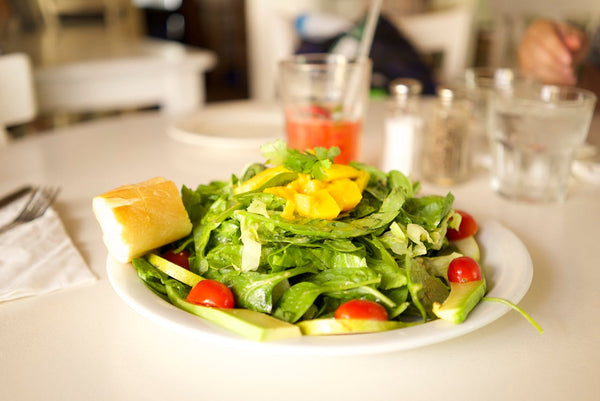The Best Iron Rich Foods
Iron is an essential mineral responsible for transporting oxygen throughout the body and maintaining overall health and vitality. If you're looking to boost your iron levels naturally, we've got you covered. In this article, we'll explore a variety of delicious iron-rich foods that can help replenish your iron stores and leave you feeling revitalized.
From the nutrient-packed spinach to the versatile and protein-packed legumes, we'll introduce you to a range of tasty options that will not only satisfy your taste buds but also provide a significant iron boost. Whether you're a vegetarian looking for plant-based iron sources or a meat lover looking to mix things up, we have something for everyone.
So, say goodbye to fatigue and hello to renewed energy by incorporating these iron-rich foods into your diet. Get ready to discover delicious recipes and learn how to make the most of these nutrient powerhouses. Your body will thank you for it!
The Importance of Iron in the Body
Iron plays a crucial role in our bodies. It is an essential mineral needed for the production of hemoglobin, a protein in red blood cells that carries oxygen from the lungs to the rest of the body. Without enough iron, our bodies cannot produce enough healthy red blood cells, leading to iron deficiency anemia.
Iron is also involved in various enzymatic reactions that are vital for energy production and metabolism. It helps support a healthy immune system and aids in the synthesis of DNA. Additionally, iron is necessary for proper brain function and the production of neurotransmitters.
Common Signs and Symptoms of Iron Deficiency
Iron deficiency is one of the most common nutrient deficiencies worldwide, affecting both children and adults. The symptoms of iron deficiency can vary from mild to severe and may include:
- Fatigue and weakness: Feeling tired and lacking energy is one of the most common symptoms of iron deficiency. This occurs because the body is not getting enough oxygen due to low levels of hemoglobin.
- Pale skin and nails: Iron deficiency can result in pale skin, lips, and nails. The lack of iron affects the production of red blood cells, leading to a decrease in skin coloration.
- Shortness of breath: When the body lacks iron, it struggles to provide enough oxygen to the muscles and organs, causing shortness of breath, especially during physical activity.
- Headaches and dizziness: Insufficient iron levels can disrupt the flow of oxygen to the brain, leading to frequent headaches and dizziness.
- Poor concentration and cognitive function: Iron deficiency can impair cognitive function, affecting memory, attention, and overall mental performance.
If you experience any of these symptoms, it's important to consult with a healthcare professional to determine if iron deficiency is the underlying cause.
Iron-Rich Foods for Vegetarians and Vegans
For those following a vegetarian or vegan diet, obtaining enough iron can be a concern since plant-based sources of iron are not as readily absorbed by the body as animal-based sources. However, with proper planning and the inclusion of iron-rich foods, it is possible to meet your iron requirements.
- Spinach: Popeye knew what he was doing when he ate his spinach. This leafy green vegetable is not only rich in iron but also packed with other essential nutrients like vitamin C, which aids in iron absorption. Enjoy spinach in salads, stir-fries, or even in smoothies.
- Lentils: Lentils are a fantastic source of iron, protein, and fiber. They come in various colors and are incredibly versatile in cooking. Use them to make soups, stews, curries, or even veggie burgers.
- Tofu: Made from soybeans, tofu is a popular meat substitute for vegetarians and vegans. It is not only a good source of iron but also provides calcium and protein. Incorporate tofu into stir-fries, salads, or marinate and grill it for a delicious main course.
- Quinoa: Quinoa is a complete protein that contains all nine essential amino acids. It is also a good source of iron, making it an excellent addition to any vegetarian or vegan diet. Use quinoa as a base for salads, stir-fries, or as a substitute for rice or pasta.
- Chickpeas: Chickpeas, also known as garbanzo beans, are a staple in many vegetarian and vegan diets. They are not only rich in iron but also high in protein and fiber. Enjoy them in hummus, salads, or roasted as a crunchy snack.
Remember to pair these plant-based iron sources with foods rich in vitamin C, such as citrus fruits, bell peppers, or tomatoes, to enhance iron absorption.
Iron-Rich Foods for Meat-Eaters
If you're a meat lover, you have a wide range of iron-rich options to choose from. Here are some delicious choices that can help boost your iron levels:
- Lean red meat: Beef, lamb, and pork are excellent sources of heme iron, which is more easily absorbed by the body than non-heme iron found in plant-based sources. Opt for lean cuts and enjoy them grilled, roasted, or in stews.
- Poultry: Chicken and turkey are also good sources of heme iron. Remove the skin and choose lean cuts for a healthier option. Enjoy them baked, grilled, or in soups and stir-fries.
- Seafood: Fish and shellfish are not only tasty but also rich in iron. Options like salmon, tuna, and oysters provide heme iron and are packed with omega-3 fatty acids, which have numerous health benefits. Incorporate seafood into your diet by grilling, baking, or enjoying them in sushi or seafood salads.
- Eggs: Eggs are a versatile and nutrient-dense food that can provide a good amount of iron. Enjoy them boiled, scrambled, or in omelets. Remember to include the yolk, as it contains most of the iron.
- Liver: If you're open to trying organ meats, liver is an incredibly rich source of iron. It is also packed with other essential nutrients like vitamin A and B vitamins. Incorporate liver into your diet by adding it to stews, pâtés, or stir-fries.
How to Increase Iron Absorption
In addition to consuming iron-rich foods, there are certain strategies you can employ to enhance iron absorption in your body. Here are some tips:
- Pair iron-rich foods with vitamin C: Consuming foods high in vitamin C, such as citrus fruits, berries, or bell peppers, can significantly enhance iron absorption. Include these foods in the same meal as your iron-rich sources for optimal benefits.
- Avoid consuming iron inhibitors with your meals: Certain compounds can inhibit iron absorption. These include tannins found in tea, coffee, and some herbal infusions, as well as phytates found in whole grains and legumes. To maximize iron absorption, avoid consuming these inhibitors with your iron-rich meals.
- Cook in cast-iron cookware: Cooking acidic foods, such as tomato-based sauces or soups, in cast-iron cookware can increase the iron content of the food. The iron leaches from the cookware into the food, providing an additional source of dietary iron.
- Avoid consuming calcium-rich foods with iron-rich foods: Calcium can interfere with iron absorption. While calcium is essential for bone health, it's best to avoid consuming calcium-rich foods, such as dairy products, at the same time as your iron-rich meals.
By implementing these strategies, you can maximize the absorption of iron from your diet and ensure your body is getting the most out of the iron-rich foods you consume.
Tips for Incorporating More Iron-Rich Foods into Your Diet
To ensure you're consistently getting enough iron in your diet, here are some tips for incorporating more iron-rich foods into your meals:
- Plan your meals: Take the time to plan your meals and include iron-rich foods in each meal. This will help ensure you have a balanced intake of iron throughout the day.
- Batch cook and meal prep: Cook larger quantities of iron-rich foods and incorporate them into your weekly meal prep. This way, you'll have ready-to-eat meals that are packed with iron, saving you time and effort.
- Experiment with recipes: Don't be afraid to try new recipes and experiment with different iron-rich ingredients. Variety is key to maintaining a healthy and enjoyable diet.
- Snack on iron-rich foods: Keep iron-rich snacks on hand, such as roasted chickpeas, dried fruits, or nuts, to satisfy your cravings while boosting your iron intake.
- Be mindful of portion sizes: While iron is essential for our health, it's important to consume it in moderation. Be mindful of portion sizes and balance your meals with a variety of nutrients.
By implementing these tips, you can make iron-rich foods a regular part of your diet and reap the benefits of increased iron levels.
Iron Supplements and Their Effectiveness
In some cases, dietary changes alone may not be sufficient to correct iron deficiency. Iron supplements may be recommended by healthcare professionals to help boost iron levels. However, it's important to consult with a healthcare professional before starting any supplementation.
Iron supplements come in different forms, such as ferrous sulfate, ferrous gluconate, and ferrous fumarate. They are available over the counter or by prescription. Iron supplements can be beneficial, especially for those with severe iron deficiency or conditions that affect iron absorption.
When taking iron supplements, it's important to follow the recommended dosage and take them as directed. Taking too much iron can cause digestive issues and may interfere with the absorption of other nutrients. It's also important to note that iron supplements can interact with certain medications, so always consult with your healthcare professional before starting any supplementation.
Supplements should never be a substitute for a healthy and balanced diet. They should be used as a short-term solution to correct deficiencies or under the guidance of a healthcare professional.


